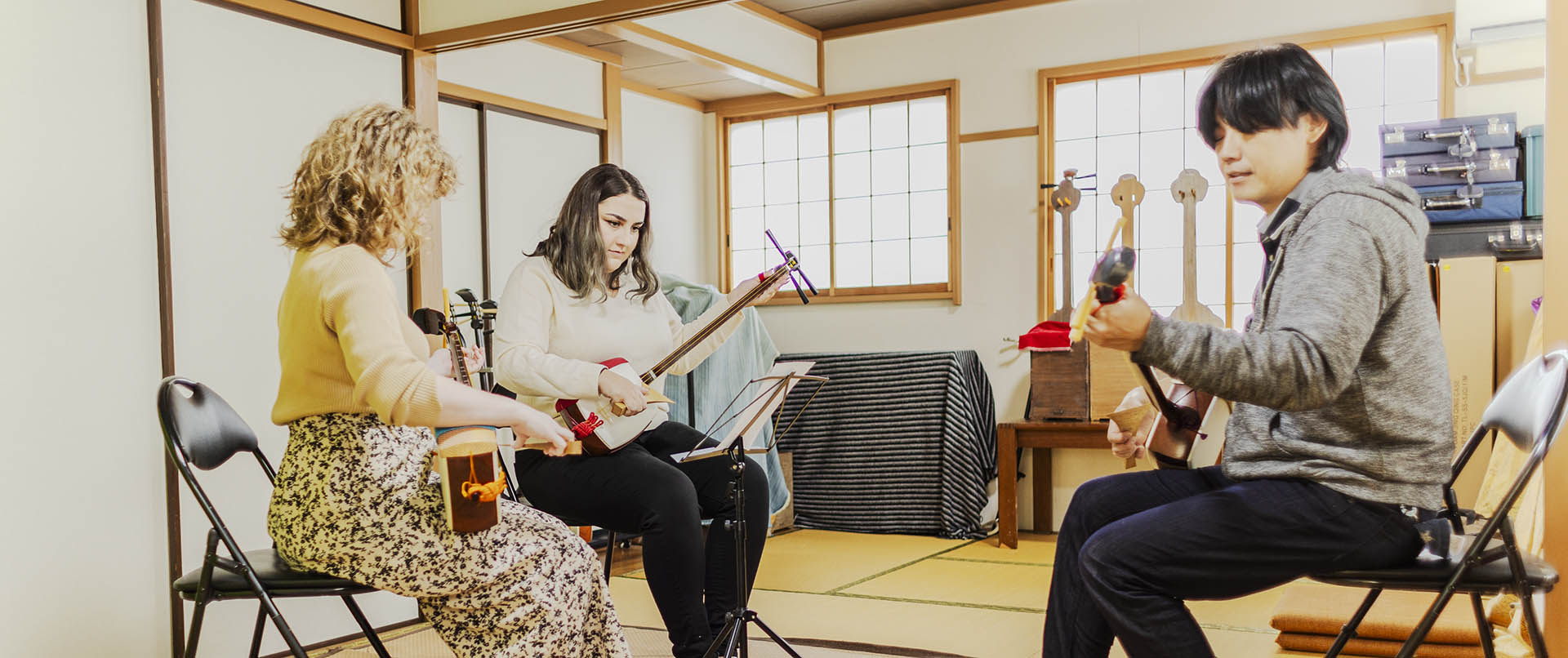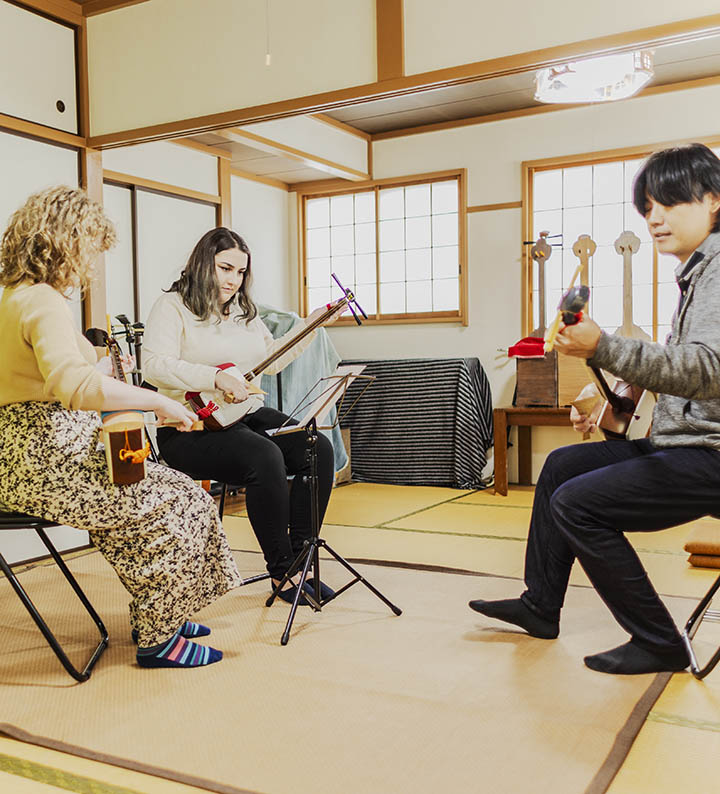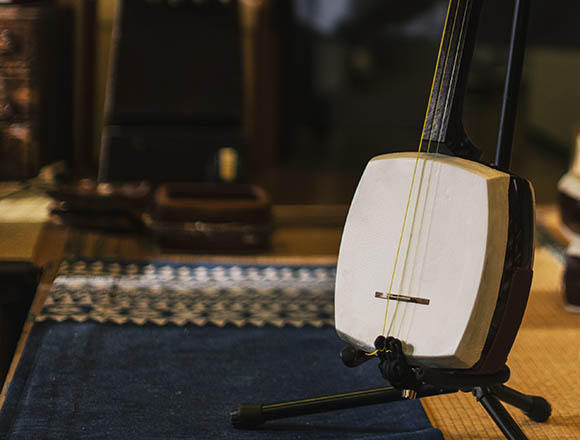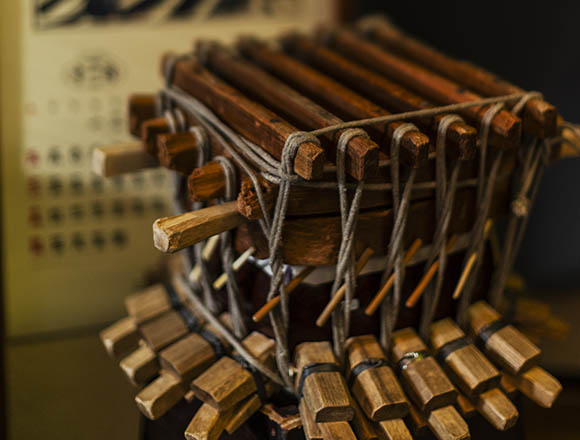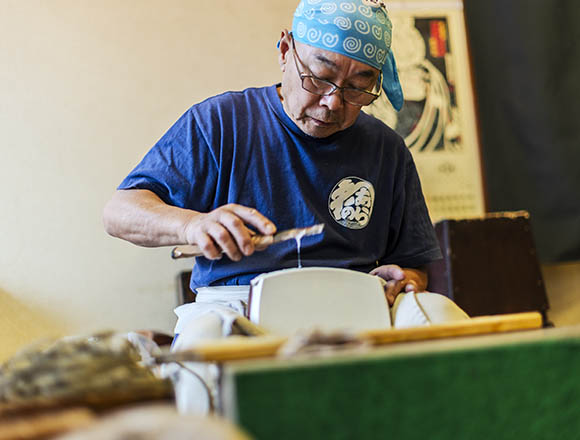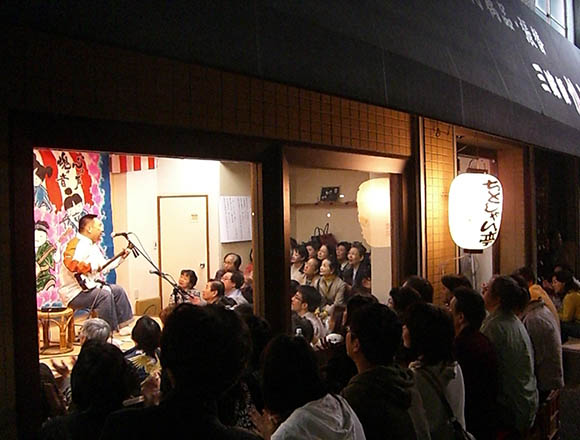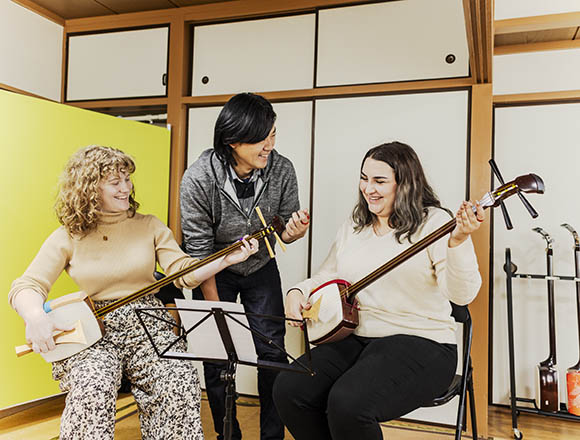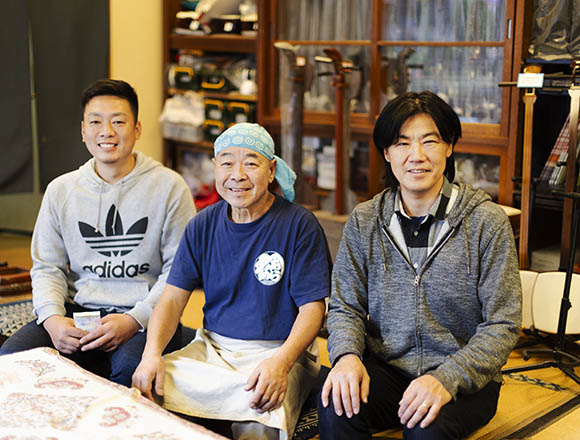Top > Do & Experiences > Learn about a traditional Japanese instrument at Shamisen Katoh
The main part starts here.
Learn about a traditional Japanese instrument at Shamisen Katoh
The shamisen is a traditional Japanese stringed instrument with a long neck, a small body or drum, and three strings. Experience the music of the shamisen at this shop and lesson space.
Traditional artistry and music just a few steps from the Toden Arakawa Line
Opened in 1989, Shamisen Katoh is operated by Kinji Katoh, who has been recognized as an intangible cultural asset by the city of Arakawa. After spotting the shop's sign, many curious passersby feel the urge to take a closer look. Visitors may even catch Mr. Katoh at work, affixing leather to the body of a shamisen, for instance, as he chats affably with guests.
Meet a master shamisen craftsman
Mr. Katoh began learning his craft upon graduating junior high school, and underwent a seven-year apprenticeship before opening his shop at age 24. He uses techniques that have been passed down since the Edo Period (17th-19th centuries), and in his craft he utilizes a variety of natural materials such as wood, bamboo, and sticky rice-based glue.
He's also the pioneer of the electric shamisen, used by several big-name Japanese musicians. His client base includes not only Japanese shamisen players, but also well-known performers elsewhere.
Experience the sound of this traditional Japanese instrument
Upstairs, Mr. Katoh's son-in-law, Mr. Kurahashi, gives shamisen lessons (available by reservation). Visitors can play shamisen made by Mr. Katoh himself, who was named an intangible cultural asset by the city of Arakawa. Musicians experienced with stringed instruments will find the shamisen easy to pick up. And even beginners can have fun learning the basics.
You'll start with the fundamentals, including how to hold a shamisen. The body is rested on the right thigh, while the neck is held up at a steep angle. The shamisen is plucked with a bachi, analogous to a super-sized guitar pick. It's held in the right hand, and plucked in parallel to the body of the shamisen. On the left hand goes a yubikake, a small woven cover that rests between the pointer finger and thumb. The yubikake makes it easy to slide your hand up and down the neck of the shamisen to play different notes.
Mr. Kurahashi demonstrated how to play "Sakura Sakura," a Japanese folk song. As it repeats musical phrases and proceeds at a gentle pace, it's not especially hard even for beginners. And if you don't read sheet music? No problem—the notes are labeled on an easy-to-understand diagram that matches up with the strings of the shamisen.
Back downstairs, customers can purchase shamisen as well as a variety of shamisen accessories. You'll also find books of shamisen music, and CDs for those who would rather listen than play.
In an increasingly fast-paced world, traditional crafts take on an even more valuable role. Shamisen Katoh is working tirelessly to pass on this priceless craft to future generations through innovation, including the electric shamisen, holding shamisen concerts, and more.
Basic Information
-
Area
Ogu area
-
Category
- Service industry
- Other retail business
- Traditional culture
- Handmade
- Others
- Entertainment
- Handmade
- Traditional culture
-
Official Website
-
Address
6-26-4 Higashi-ogu, Arakawa City, Tokyo
-
Tel
03-3892-6363
-
Opening Hours
10:00-18:00
-
Closing Days
Sundays and holidays
-
Estimated time required for lesson/activity
Shamisen lesson: Approx. 60 minutes
-
Price
1,500 yen
-
Access
Higashi-ogu-sanchome bus stop | 2 min on foot | Toden Arawaka Line, Kumano-mae Station | 3 min on foot | Nippori-Toneri Liner
-
Nearby Spots
-
Remarks
To reserve a shamisen lesson, send a request to the email address above
chitoshan@shamisen-katoh.com
Updated: January 14, 2025
